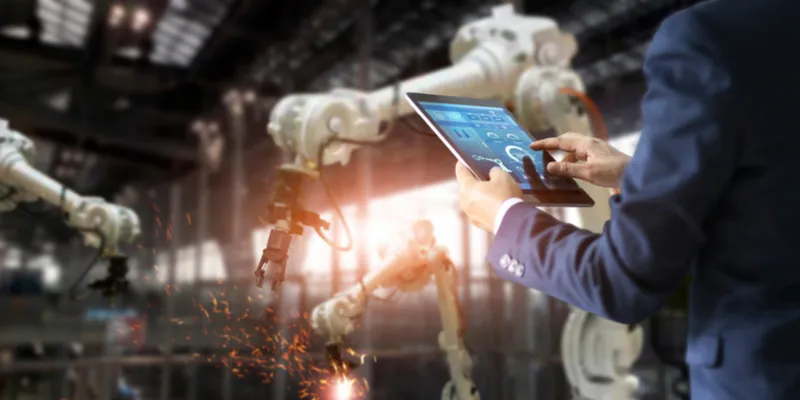How technology and automation will lead to a workforce overhaul in the manufacturing industry
The manufacturing sector is undergoing a tectonic change. The emergence of new technologies has meant that to succeed companies need employees who can help them take advantage of these technologies.

Unlike earlier when production was carried out on assembly lines using an army of workers, large industrial machinery, and raw materials, manufacturing today requires far more sophisticated tools to generate profits. Consider that McKinsey reported less than a year ago that by 2030 nearly 800 million jobs globally will be automated; while most of those affected will be in the developed world, nearly nine percent of India’s workforce will also be affected. What is striking is that McKinsey went on to say that this will transform society just as it had been in the1900s when factories replaced farms as the dominant means of production.
Data is the new oil for managers
While the phrase “data is the new oil” may have been coined by an Indian business magnate, the use of data to improve the production process and to serve customers better than was possible before have been known for over a decade. One may ask how data is pertinent to solving the pressing issues of today. The answer is elegantly simple; by using data, companies will be able to predict with a great deal of accuracy the behaviour of players in an industry. For instance, when data is accurate and correctly analysed it will allow a personal protective equipment (PPE) manufacturer to learn what kind of demand can be expected for the product from a particular city or district or from a single contractor. Therefore, businesses and organisations need to hire big data analysts who can use big data to predict the behaviour of consumers and customers.
Need for experts comfortable with automation
Over the past few decades, automation has transformed factory floors. A recent study by McKinsey has shown that the tasks performed by workers 64 percent of the time can be automated using technology available today. To put this in dollar terms it means that $2.7 trillion out of a total of $5.1 trillion paid to workers globally can be saved by automation. Clearly, automation has a huge scope to not only save companies money but to also allow workers to work in more productive areas. From an economic point of view it makes tremendous sense for companies to automate their manufacturing process because not only will doing so save expenses in the long run, it will also improve the lives of workers and lead to fewer accidents in the workplace. Companies need to hire managers and consultants who can allow companies to effectively transition from a worker-led manufacturing process to an automated one.
Managers who realise the scope of manufacturing
Perhaps no campaign has captivated Indians more than Prime Minister Modi’s Make in India campaign. It is being promoted using the potent symbol of a lion and images of cogs and heavy industry. The intent of the campaign is clear: India is aspiring to be one of the leading manufacturers in the world. By 2020 it is expected that India will become the fifth largest manufacturing destination in the world and, consequently, the demand for engineers and skilled workers will also grow. Companies that hope to play a part in the Make in India campaign must be willing to not only automate and hire data analysts to predict their customer’s behaviour but must also be willing to hire engineers who have the skills to operate the newest heavy machinery and those with knowledge of the newest manufacturing processes.
Naturally, manufacturing processes expose the workers hired to carry out such processes to certain hazards and while many such hazardous tasks may eventually be automated, a significant number of such jobs will not be automated. Companies must be willing to hire managers who have the know-how to decide which jobs must be automated and which jobs may still be done best by human beings.
Managers needed to move up the value chain
China is a low-cost manufacturing hub, and India too can be. However, the question that is on the minds of leading thinkers is when will the manufacturing sector in India create jobs that pay well? Being the factory of the world may be a good tag to have for a few decades but being the factory of the world indefinitely is not necessarily enviable. This is simply because to be the factory of the world an economy must pay workers less than other competing economies. Companies in India need skilled managers and production and operations experts who can help them move up the value chain and create higher value products. The widespread manufacture of such products will mean that the workers who build such products will be paid well too.
There is a need to not only manufacture but to manufacture innovatively so that the products made in the country are as good as those built in the developed world. Once this happens such products can be sold overseas or in India at higher prices allowing Indian companies to pay their workers better. Today only a relatively few Indian companies, including some in the PPE space, are able to manufacture products that meet international standards
Certainly, automation, big data, and well-educated engineers and managers will have a place in the Indian economy in the decades to come. To succeed in the future Indian companies will also need to grow leaner and be more knowledge-driven than they had been in the past if they wish to take on their global competitors.
(Disclaimer: The views and opinions expressed in this article are those of the author and do not necessarily reflect the views of YourStory.)







